The world of sim-racing revolves around several key elements of a setup. You have the necessary peripherals, which are the bases, the steering wheels and pedals. Every sim-racing setup needs at least these 3 products. But for pro-racers and budding drivers, that’s not enough, and you’ll need to add other products and/or peripherals to give it that extra dose of realism.
Naturally, the sim-racing industry has noticed this trend among enthusiasts who are looking for the ultimate configuration, giving them virtually the same sensations as on the track, but at a much lower price. However, as in virtually every market, there is always a gap or a lack that is not being filled by anyone. This has given many companies the opportunity to emerge and become undisputed players in the desired segment.
The first example that springs to mind is the chassis and cockpit market. In the early days of sim-racing, no one offered a chassis for a rig, and the only “prototypes” out there at the time were homemade. The company Playseat came into being long ago because of a gap like this. Its founder was passionate about motor racing, especially karting, and wanted to train at home on racing games.
Fast-forward to 2023 and the Playseat company is among the market leaders in sim-racing cockpits. But it has to be said that other players have emerged in the meantime, most notably Sim-Lab, which has still had a fine run since its inception in 2015.
In what follows, I’m going to zoom in on this brand. I’ll review its most emblematic products and briefly touch on its history.
Sim-Lab product ranges
In the early days, Sim-Lab only made sim-racing cockpits and chassis for the general public, in addition to those for its partner Mercedes-AMG Petronas. But for some time now, the company has been keen to broaden its customer portfolio, so it decided to branch out into sim-racing peripherals.
Today, Sim-Lab is active in 2 segments: the first, chassis and cockpits, and the second, steering wheels, peripherals and dashboards, thanks to its subsidiary Grid Engineering , which was actually bought out by Sim-Lab to become Grid by Sim-Lab. That was a quick overview, and I’ll now go into a little more detail about the Dutch manufacturer’s products.
Sim-Lab cockpits/chassis
Since the company is the partner of Mercedes-AMG Esports, Sim-Lab currently offers several products and peripherals for sale, and I’m not going to dwell on every entry. For this article, I’m going to cover a few of the products that are best-selling and most popular with racers around the world.
The GT1 Evo
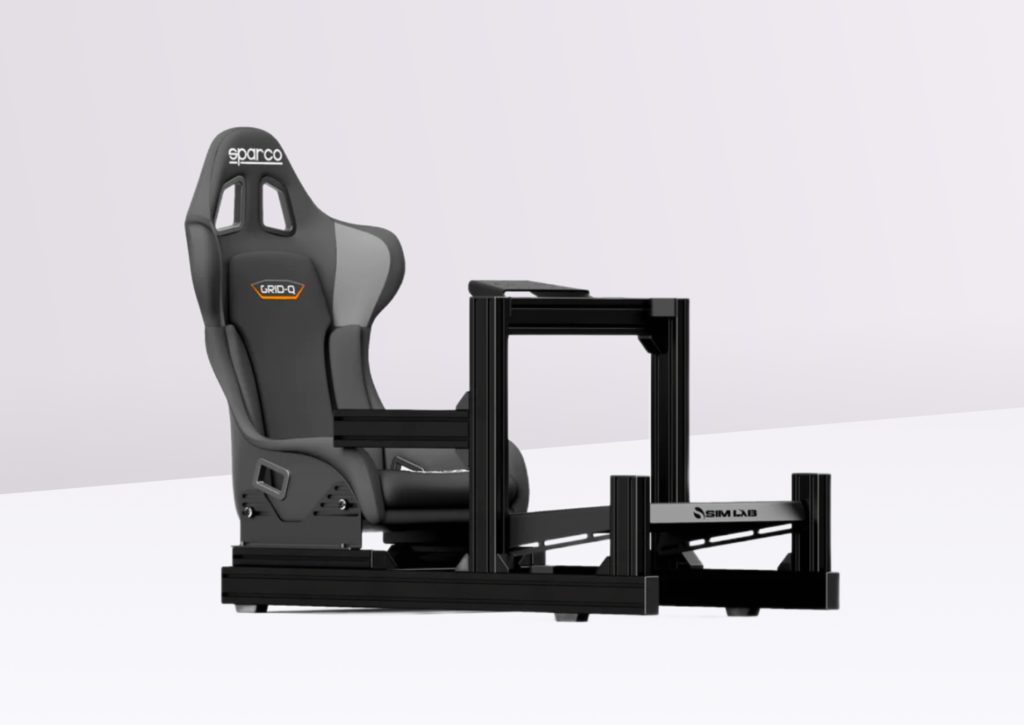
The GT1 Evo can be seen as Sim-Lab’s entry-level chassis. This little baby is made from profiled aluminum, allowing for a high degree of modularity in terms of seat configurations and other sim-racing peripherals.
Size-wise, it’s not that bulky, measuring 135 x 58 x 66 cm (length, width and height). On the other hand, it’s not so light either: the GT1 Evo weighs in at around 50 kg on the scales, with just the chassis. Yes, this product doesn’t come with a seat, which is available either from the Sim-Lab catalog or from competitors. However, you do have the option of adding seat slides.
I’ll now move on to the GT1 Evo brackets. There are three in all: 1 for the chainstay, one for the bottom bracket with its adjustable plate, and one for a shifter and/or handbrake. For the chainstay, the GT1 Evo once again uses profiled aluminum for its structure and an adjustable plate to accommodate the chainstay. This structure is designed to handle the 25 nm of torque of a Fanatec Podium DD2which speaks volumes for its strength and rigidity. But that’s not all. You can also add monitor mounts directly to your chassis, making it complete for total immersion.
As for the rest of the brackets, we have the crankset bracket in the form of a plate with several slots for fixing screws, and this plate is adjustable in inclination. The shifter/handbrake support is on the side and can accommodate several sim-racing peripherals.
Now for the price. The GT1 Evo in “naked” configuration, with nothing at all, is priced at €395. Optional extras include brackets for monitor(s), seats and even runners. In full option, this chassis can go up to over €1,360, which is frankly very expensive. But at the same time, you can option it with just one seat and it will cost you around €792, which isn’t bad for the product you end up with. As far as I’m concerned, the GT1 Evo is a chassis perfectly suited to GT racing, F1, rallying, touring and so on.
The P1X Pro
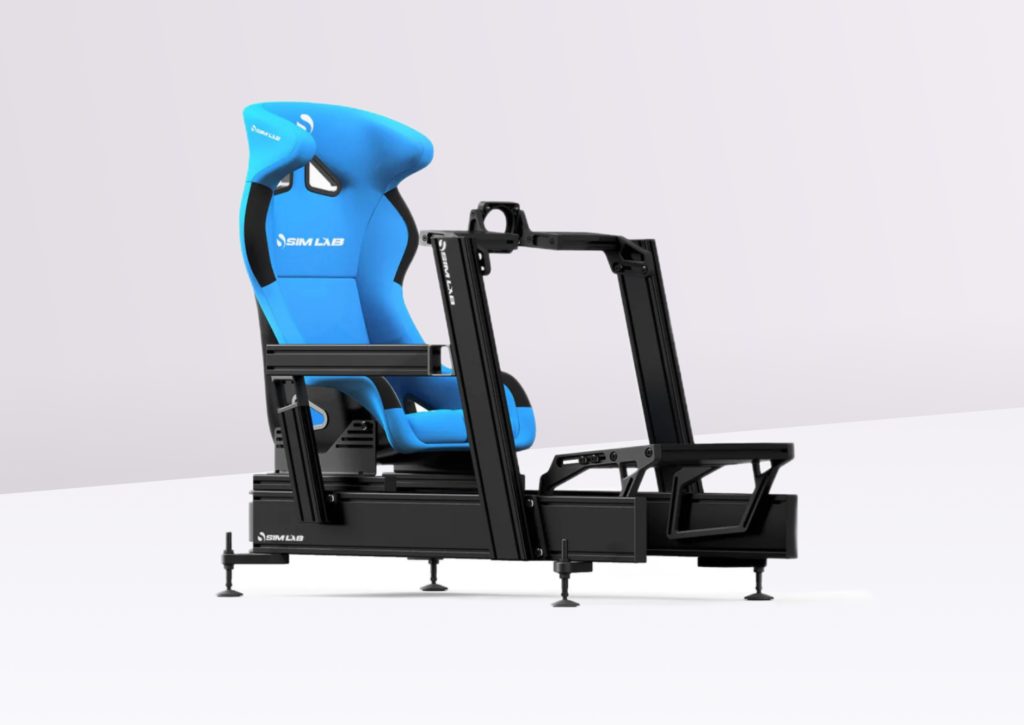
The P1X Pro is a top-of-the-range chassis from Sim-Lab, while being a more or less different version of the P1X, which is a very popular product from the Dutch manufacturer. I’ve chosen to present the P1X Pro because the P1X is currently out of stock, so I’d rather highlight a chassis available for purchase than one you won’t be able to buy if the urge strikes you now. Anyway.
In terms of design, the P1X Pro is truly beautiful, with a streamlined aluminum structure and monitor mounts/arms worthy of being used by NASA or SpaceX. It’s magnificent, as far as I’m concerned, and a welcome change from the boxy design of Sim-Lab’s other models. It’s quite subtle, of course, but a change all the same.
As for the chassis, it’s ultra-rigid, doesn’t move or flex. Since its creation, Sim-Lab has mastered the manufacturing process for its chassis, and the company has become an expert in this field. The base’s front support is designed to accommodate a SimuCube 2 Ultimate, a base that puts out no less than 32 nm of torque, which is just enormous. However, I must warn you that this chassis is only compatible with certain bases, depending on your choice of wheel mount. If you choose one when configuring the chassis, and it’s free by the way, you’ll only be locked in with bases compatible with the mount you’ve chosen.
As on the GT1 Evo, you have the option of monitor mounts, which are quite frankly magnificent, and I love them. These mounts will cost you between €200 and €300 extra, but they’re worth it for the ultimate sim-racing experience.
For the seat, it’s like all the other models: it’s not supplied as standard with the cockpits, but you can either option it directly from Sim-Lab, or take slides and brackets to acquire the seat yourself.
Let me now turn to the P1X Pro’s ergonomics. It’s excellent, with a slightly higher seat height than the GT1 Evo. The side support is perfect for competition-specific sim-racing peripherals, such as a shifter or handbrake. Chassis-integrated rails allow perfect adaptation of the riding position to your needs and size, and the same applies to the bottom bracket, which is also adjustable in several planes. Quite frankly, the P1X Pro is an excellent chassis, a true evolution of the P1X, which is much sought-after by racers.
“Now for the price. In its bare-bones configuration, the P1X Pro costs €793, with the choice of a front-mounted stand having no financial impact. But if you start adding monitor mounts and a Sparco seat, the bill will easily top €1,700. It’s still expensive, of course, but you don’t have to take it as a full option. What’s more, the P1X Pro is a chassis that can be used in several motorsport disciplines, something that’s quite rare in the industry, especially with competitors like Playseat.
Sim-racing peripherals
With the acquisition of Grid Engineering by Sim-Lab, the Dutch cockpit manufacturer has added a new string to its bow, including dashboards, steering wheels and pedals, in addition to other accessories and sim-racing products.
XP1 Loadcell crankset
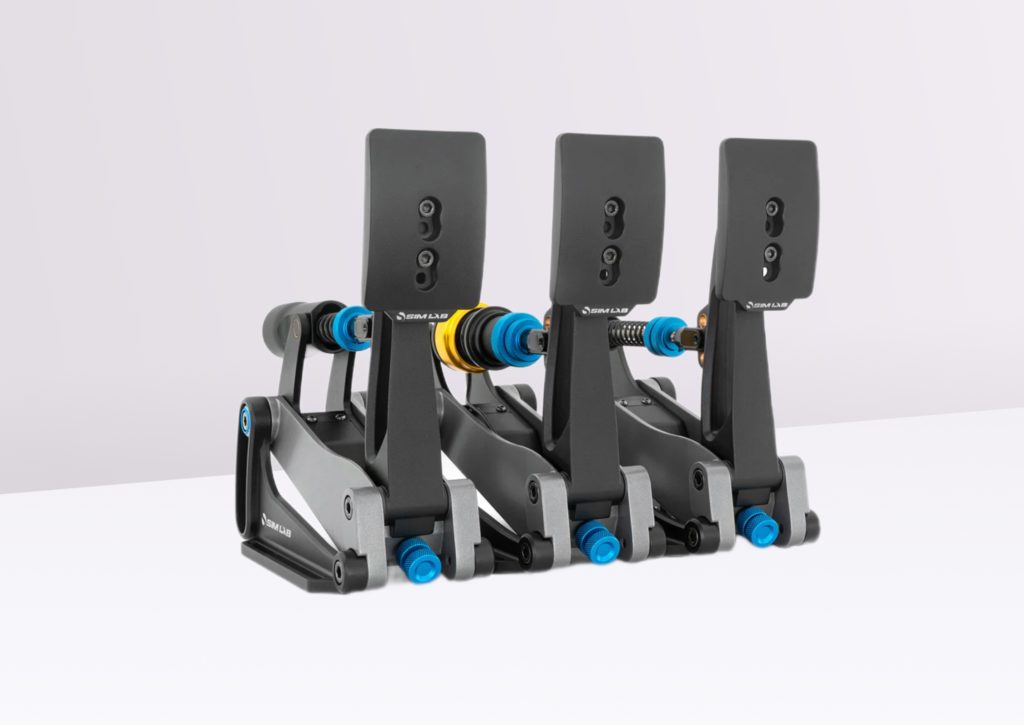
As Sim-Lab’s first pedalboard, we had to offer one in Load Cell, of course. The design is really nice, with identical pedals and differences only in the Load Cell.
For the brake, we have a two-stage system, as found in virtually all other manufacturers of sim-racing peripherals. The digital part is provided by a 16-bit sensor, and for the Load Cell, no less than 200 kg of pressure can be absorbed by the brake, which is quite simply enormous. Instead of having an inclined system, the XP1’s mounting system is “in-line” with the pedal, giving it precision, feedback and feel pushed to the extreme. Of course, you can adjust the sensitivity of the pedals, their inclination or simply their location. It’s not a Sim-Lab product if you can’t adjust it to your liking.
This pedalboard is brand new, released just a few months ago. For the price, you have 3 options: the 2-pedal kit for €545 (currently discounted to €495), the 3-pedal kit for €693 (currently discounted to €643) and the clutch pack for €197. As far as I’m concerned, this is still an excellent investment compared with the competition, especially with a 200 kg Load Cell, if you take the 3-pedal kit. The brake + throttle kit is good, but its price isn’t that great, as you can get Heusinkveld Sprint Black for practically the same amount.
Dashboards
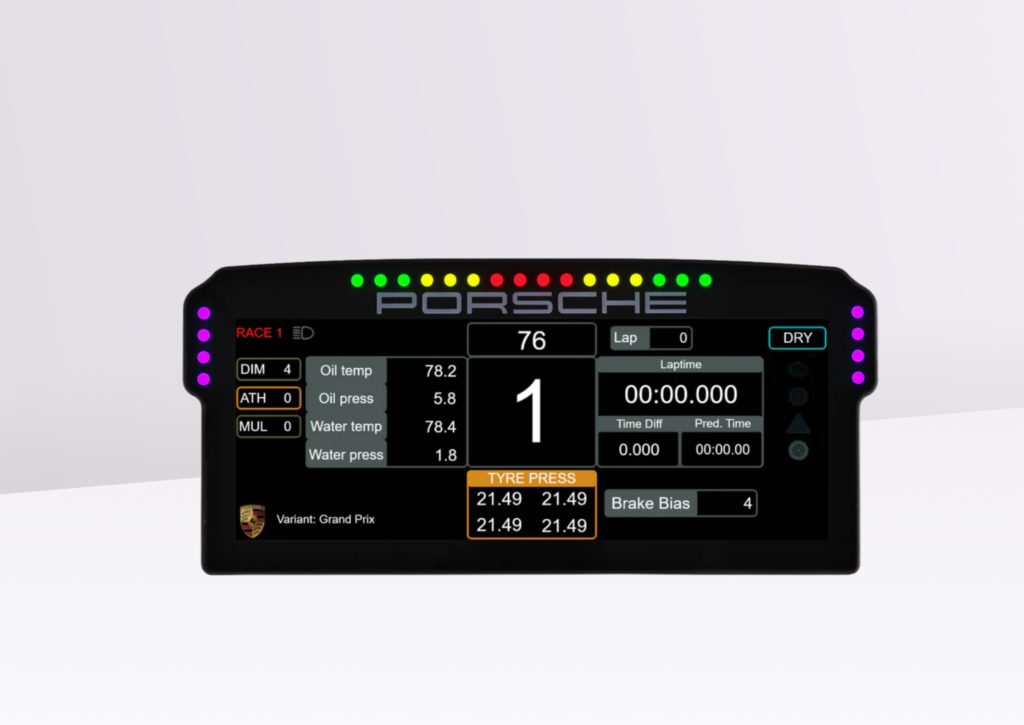
For dashboards, you have 3 entries in the Sim-Lab catalog: the Porsche GT3 Cup, the Grid DDU-5 and the Sim-Lab SD43, from the most complete to the simplest respectively. The Porsche features a large 10.3″ screen, officially licensed. It displays data such as lap, time, various telemetric information on the car and so on, and it’s all configurable according to your preferences. It really is a superb display, but one that costs an arm and a leg. Expect to pay no less than €595 for this little gem.
The DDU-5 is a fine display too, but less complete than the Porsche. At 5″ diagonal, it features telemetry data, time information and the possibility of configuring everything at will. Price-wise, the Grid DDU-5 retails for €346, which isn’t bad.
The SD-43 is a 4.3” LED display compatible with SimHub and Z1. On it you’ll have a variety of telemetry data on the vehicle and the circuit, and it costs just €197 at the moment thanks to a great promotional offer.
Sim-Lab accessories
Here you’ll find a whole host of products, including brackets, QRs, adapters, slides, seats and more. It’s a wide range that complements Sim-Lab’s cockpits. There’s also a brand-new Load Cell handbrake with a 150 kg load on your hand. The product is handsome, solid and has a two-stage system, just like the XP1 crankset.
Sim-Lab: the story
As you know, sim-racing peripherals can be expensive, especially if you shop with premium manufacturers. It’s true that the more expensive a sim-racing peripheral is, the more sensations and realism you’ll get, in addition to impeccable build quality.
Except that if you have talent and a passion for sim-racing, low-end, affordable products certainly aren’t going to win you over, especially if you don’t own a portfolio of Apple shares. This is what Richard Schouteren, a Dutch gentleman and the founder of Sim-Lab, noticed, because he was a racing enthusiast and found it unacceptable to shell out a small fortune for a quality setup.
Back then, as is still the case today, good chassis were expensive, very expensive indeed. So, if you lacked the financial means, you had two options: either use a table and chair as a rig, or buy a cheap cockpit. In both cases, you had to make a lot of compromises, and Mr Schouteren didn’t want that at all.
In 2015 he embarked on the sim-racing adventure, creating the Sim-Lab company, which specializes in the design and manufacture of quality chassis and cockpits, while being affordable, as far as possible, for the Sunday driver. Fast forward to 2023, and Sim-Lab is one of the official partners of the Mercedes-AMG Petronas Esports team, the same people who bring great racing cars to the masses. I don’t know about you, but that’s a long way to go for a company that didn’t even start 10 years ago.
Is Sim-Lab a brand worth considering?
With the expansion of its product catalog, Sim-Lab is attempting to compete with other brands on their own turf, notably with its pedalboard, handbrake, dashboards and other products.
If you’re looking for a solid, robust and modular cockpit, without it blowing your budget, I highly recommend those from Sim-Lab. The Dutch company has come a long way since 2015, and its products are considered among the best in the segment today.
What’s more, with the latest additions to Sim-Lab’s catalog, you’ll have a whole ecosystem perfectly suited to setting blistering lap times on the world’s most legendary rally stages and circuits. Incidentally, Sim-Lab is compatible with virtually all sim-racing peripherals from the big names in the discipline, from Thrustmaster for low-cost chassis models, to premium segment leaders such as Fanatec or Simucube.
For me, it’s a no-brainer: a Sim-Lab cockpit is a no-brainer, and I imagine it will be the same for you.




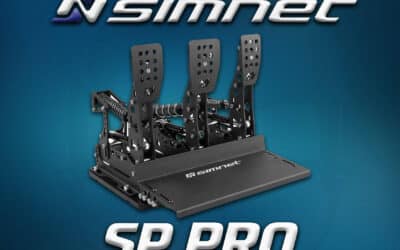



0 Comments